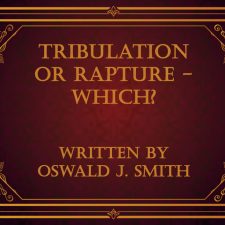One of the most fascinating aspects of the Bible is its prophetic nature. The prophecies in the Bible astound us and give us insight into who God is and how He operates in our lives. But understanding biblical prophecy is not always easy, nor is it something that can be done overnight. It requires years of dedicated study and a willingness to dive deep into the Scriptures, history, geography, ancient languages and more.
When it comes to interpreting Scripture, context matters—and that’s especially true with biblical prophecy. Proper context helps us understand God’s will by providing us with the necessary historical and cultural background information needed to make sense of these complex passages. Without proper context, we miss out on understanding what God has actually revealed in His Word.
What negative side effects happen when we don’t understand it properly? Throughout history, many people have been so passionate about understanding these prophecies that they’ve made false predictions and taken drastic action only to be proven wrong. In this article, we’ll look at seven examples of times when people misunderstood biblical prophecy about the last days and the errors that resulted.
The Crusades (1095-1291)
The Crusades were a series of military campaigns that took place in the Middle Ages and were led by members of the Latin Church in an effort to reclaim land that had been taken by Islamic forces. The Crusades began in 1095, when Pope Urban II called on Christians to take up arms against Muslim forces in the Middle East. In his speech, he asked for “Christian soldiers to fight those who have invaded the lands of Christians and have depopulated them by pillage and fire.” He based this call to arms on a passage from the book of Revelation that spoke of an impending war between God’s people and those who opposed him. This misunderstanding led to centuries of bloodshed and conflict between Christians and Muslims.
The Great Awakening (1734-1745)
Nearly four centuries after the Crusades ended, another misunderstanding arose when it came to biblical prophecy—this time around the Second Coming of Christ. During this period, known as the Great Awakening, religious leaders began preaching about an imminent return of Jesus Christ and encouraged their followers to be ready for His coming by repenting from their sins. They argued that all signs pointed to His imminent return—a claim largely based on passages from 2 Peter 3:8-9 which states that “with the Lord one day is like a thousand years, and a thousand years is like one day”—and warned of dire consequences if their listeners failed to heed these warnings. Eager for Jesus to return, many began neglecting their everyday responsibilities such as tending farms or paying taxes, causing economic disruption across the country.
Millerites (1843 (2x), 1844 (2x))
William Miller was a Baptist preacher in the early 19th century who founded what became known as the Millerites. Using Daniel 8:14 (the “cleansing of the sanctuary”) and other proof texts, Miller calculated and recalculated several dates for Jesus’ return to earth, finally landing on October 22, 1844. When this last attempt also failed to occur, his followers were devastated and entered a time known as the Great Disappointment. Some eventually went on to form the Seventh-day Adventists.
Jehovah’s Witnesses (1914)
Charles Taze Russell was a Presbyterian clergyman who founded what is now known as the Jehovah’s Witnesses in 1872. He believed that Jesus Christ returned invisibly on October 2nd, 1874 to usher in a new era of peace and prosperity for believers on earth. Inspired by the beginning of World War I as the beginning of Armageddon, Russell taught that Jesus would return in 1914. This obviously did not happen, but Jehovah’s Witnesses continue to hold onto the belief that Jesus returned invisibly in 1874 and will reveal Himself soon.
Herbert W Armstrong (1936, 1943, 1972, 1975)
Having already missed two end-times predictions, Herbert Armstrong, American evangelist and founder of the Worldwide Church of God, predicted that Jesus Christ would return sometime between 1972-1975. These calculations were based on his interpretation of biblical prophecies concerning Israel’s rebirth as a nation-state in 1948 and their victory in the 1967 Six-Day War. However, both 1972 and 1975 came and went without any sign of the Second Coming or Armageddon. Armstrong died in 1986 without ever having seen his predictions come true.
Harold Camping (1994 (3x), 1995, 2011 (2x))
Harold Camping was an American Christian radio host who proclaimed throughout his career he had discovered a new formula which revealed when Christ would return. Camping first claimed several moving dates for Jesus’ return in 1994-1995 and then again in 2011. His predictions received widespread attention but failed to materialize as expected. Deluded, some Christians fell into financial ruin after spending their life savings on Doomsday preparations and billboards advertising Camping’s predictions. Camping later admitted he was wrong and apologized for misleading people with his false claims.
Edgar Whisenant (1988, 1989, 1993, 1994…)
In 1988, former NASA engineer Edgar Whisenant published a book titled “88 Reasons Why The Rapture Will Be In 1988.” In it, he claimed that the Rapture would occur on September 11-13 of that year. His book sold over 4 million copies. When his prediction failed, he republished the book under the title “89 Reasons Why The Rapture Will Be In 1989” explaining he had made an error in his calculations. When this prediction failed too, Whisenant went quiet until 1993 when he wrote another book entitled “On Borrowed Time,” predicting 1994. Whisenant continued to make predictions until he eventually faded into obscurity.
The Need for Proper Interpretation
These have been just a handful of end-times errors where people have misunderstood biblical prophecy about the last days and were led into misguided beliefs with negative consequences. As Christians today, it is important that we seek knowledge from reliable sources (1 Tim 2:4; 2 Tim 4:3) so we might understand God’s plan for us more clearly. Romans 12:2 reminds us not to be conformed to this world, but to be “transformed by the renewing of your mind that you may prove what is the good, acceptable and perfect will of God.”
If you are interested in growing in your understanding why you believe what you believe, consider joining or starting a small group Bible study with your local church today.
References
“Bible Study Groups”. Crosswalk Inc. Accessed March 10, 2023. https://www.crosswalk.com/faith/bible-study/bible-study-groups-1277321.
“What is Prophecy?” Got Questions Ministries. Accessed March 10, 2023. https://www.gotquestions.org/prophecy-prophesy.html.
Schoenherr, Matthew. 2022. “You’re Probably Wrong”. Prophecy Course. Retrieved from https://prophecycourse.org/session/03/wrong/.
“Unfulfilled Christian Religious Predictions.” Wikipedia.org. Retrieved from https://en.wikipedia.org/wiki/Unfulfilled_Christian_religious_predictions.














